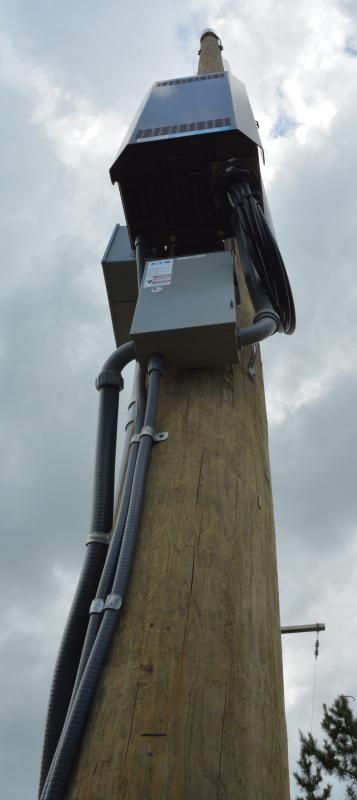Are usually safest distance coming from a 5G cell System?

If you've ever wandered through a city you might have noticed tiny cell towers for 5G placed on poles for street lighting. They look like little boxes however, they're actually transmitting wireless signals from cell phone providers to your phone.
what is a safe distance from a 5g cell tower are replacing larger built cell towers. Although they're not as visible, they still can create problems for those who live nearby.
It is the FCC's Radiation Exposure Thresholds
The FCC's Radiation Exposure Thresholds define the safe distance that a person can be exposed to electromagnetic radiation from wireless devices. The exposure limits are based on research which show that the energy of RF can be harmful to health.
The rate of absorption called the specific absorption rate (SAR) is a measure of the amount of radiofrequency energy that is absorbed by tissue. It's typically 1.6 Watts per kilogram calculated over one Gram of tissue.
Since 5g is able to transmit at higher frequencies and has the potential to cause greater energy intensity on the skin as well as other body parts. This can lead to various possible harms, such as an increase in appearance of skin conditions such as dermatitis, cataracts, and skin cancer.
Due to the potential for negative effects of 5G radiation, PSU has chosen to establish a general, localized power density limit of 4 mW/cm2 averaged over 1 cm2, and never to exceed 30 minutes, for all 5G services at 3000 GHz. This localized limit is consistent with the highest SAR that is spatially averaged at 1.6 W/kg averaged over 1 5 grams of body tissue, at 6 GHz.

The FCC's Maximum Exposure Thresholds for Maximum Exposure
If you've ever used a cell phone, you probably know that the safest location from the tower is around 400 meters. This is due to the power of transmission from the cell tower is significantly increased the farther your location from the tower.
While this sounds like a good idea however, those living close to towers could be more susceptible to health problems. For example, a study from 2014 in India discovered that people who lived within 50m of cell towers had much more health problems than those who were away from the antennas.
However, what is a safe distance from a cell tower found that people who moved to areas that were further from cell towers noticed their symptoms return to normal within a couple of days. Other studies have shown that exposure to high amounts of electromagnetic field radiofrequency (EMFs) can lead to brain tumors, cancers as well as other health issues.
This is due to the fact that RF radiation, which is used in wireless communication, can be absorbed by the body's outer layer, which is the skin. It is crucial to know because the skin acts as a shield against injury to the body, infection caused by pathogenic microorganisms and entry of toxic substances. The skin is the largest organ in the human body and is responsible for keeping the integrity of the other organs.
The FCC's Minimum Exposure Thresholds
The FCC's Minimum Exposition Thresholds depend on a variety of assumptions that are not supported by scientific evidence. These include the erroneous assumption that exposures of a short duration to RF radiation are safe because of the minimal radiation penetration in the human body (i.e. the heating of tissues).
The assumption is also ignoring the greater penetration of ELF elements of modulated radio signals and the effect of short bursts of heat generated by RF waves that are pulsed. These assumptions are not in line with the current understanding of biological consequences of RF radiation. As such they shouldn't be used for health protective exposure standards.
Additionally, the ICNIRP and FCC are limiting their radiation limits for local peak SARs, based on the peak frequency of absorption (psSAR) that is not a sufficient dosimetric tool for determining the level of radiation exposure. Particularly the psSAR tool is not accurate for frequencies that exceed 6 GHz. Furthermore, psSAR has not been tested for what is a safe distance from a cell tower exposed to other environmental agents , such like sunlight. Interactions of RF radiation with other environmental agents may result in antagonistic or synergistic effects. This can lead to the risk of having adverse health adverse effects. For instance, exposure to RF radiation along with exposure to sunlight can increase the risk of developing skin cancer and exacerbate other skin diseases such as acne.
